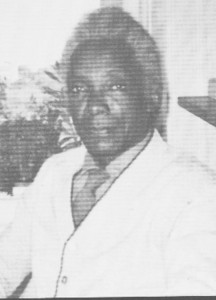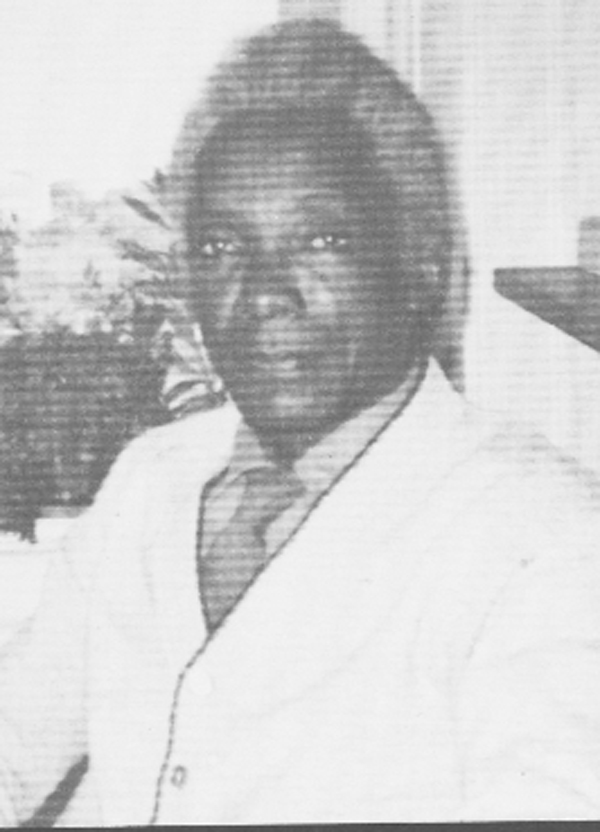Kyk-Over-Al is one of this country’s oldest and most respected literary journals. Guyana Review reprints this essay by Denis Williams that was first published in Kyk-Over-Al, Vol. 2, No. 9, December 1949.
Guiana Today
By Denis Williams
Each day we die a little death beneath the sun. By noon the positive is scorched into a pointless neutral and a whole population gasps, its heat turning dully on a still sharp point. This is the first thing. The most important. We are still dominated by the sun-strangers in a land we call our own.
There is no Guianese people. Only an accumulation of persons − end products of a various history. Images in mud of the distant alien. Here patterns kill us, and the spiritual bullying of foreigners forever consent to the act. Incoherence, apishness, sentimentality, uncreativeness. And always the blighting frustration of a land which has got us down. Think for instance on our emotional life − caught up within a mesh of influences. There is some pattern here.

We mob the returning prize fighter in an ecstasy of appreciation and mourn the death of our only composer. We no longer return from “away” with unfamiliar accents (not generally, anyway) but are expected in a vague way to be better fellows for it, polished, cultured. “He would do well abroad,” and so on! Always. The sanction and blessing of the “civilized” countries, which is our hall-mark, for want of native values − a tacit admission, of course, that there is no good here. The emotional cohesion is only superficial, resting inevitably on alien standards. A collective local response to anything at all is simply unimaginable.
The truth is, we are a lot of persons and a lot of races, with a super village mentality. To begin with, we are in no way at all adapted to this land in which we live − the first thing the savage does. Our dress is ludicrous, as are most of our other habits. We allow the sun to wilt our inspiration daily instead of enjoying it as the Mexicans do (same hours or work etc). We eat unintelligently for our climate, and build our houses even more so. In all the innumerable trivia of our own social and domestic life we chain ourselves to our irritating string of invalid habits which are unfriendly to the human in these latitudes and which consequently rob us of the impulse toward that cumulative finesse which is the art of living among all civilized peoples. There is no vision here.
Rather, we cling to a dream of a very negative quality. The person in Guiana looks outward. Naturally. But the aggressive European pattern is always strange, aloof and unfriendly. There is no substantial link. Here we are up against history, race and culture. We can never change our spots, never build Georgian town halls or Renaissance churches, or create the frescoes of Piero della Francesca; so we create a myth − an edifice which is nearly secure enough to make us forget our troubled yesterdays in the accomplishment of those peoples most like us.
Our real heroes are the American Negro, the Indian in India, the Chinese in China, and for those of indistinct and diverse origin − the European in the world. Our heroes function of course in a purely decorative way, showpieces of our different and differing races, brilliant enough to cast the sharp reflections in which we bask. Actually, their existence is quite removed from ours and touch us in no other than in a very remote and universal sense. Nevertheless, the dream persists and with it the inevitable flow of “colored” magazines, etc., the nightly oriental music and periodic rites, the “national” dress, the special holidays, special pages in the news, special graveyards – “that the pattern may subsist, that the wheels may turn, and still be forever still.” Our insularity is paradoxical.
So our position remains immovable. But our smug edifice is strong only at the top. At the bottom it rests on the calypso, which is the faint heart of all Guiana. But it rests heavily and one common touch would yet fail to make our whole world kin. Undoubtedly there is a Guianese pattern − a part of the whole which is an assured West Indian pattern. That faint residue which would surely continue to drift around if the Caribbean Sea should tonight drown our posturing and “fantastic tricks” in a single movement of history. But here in Guiana it is too vague and impalpable to amount to anything like an influence, far less a way of life and even much less a contribution to the universal spirit of all men. It is a prostrate frustrated something lying beetle-like on its back, awaiting the touch of the interested hand. A considerable point is, how good is it for the beetle to tilt over by any but its own effort.
Someone said a nation gets what it wants. True. It falls in very beautifully with Lamarck’s conception of creative evolution. The tragedy lies always, of course, in wanting the troublesome things. The will of a nation is certainly a very powerful thing, and I believe that Michelangelo grew out of Renaissance Italy in precisely the same way as Lamarck’s hypothetical giraffe grew a long neck. I know of no better explanation. When Italy grew full enough of great men she ceased any longer to produce Leonardo, Dante, Raphael; and the usual horde of imitators and mummifiers closed the lid on her creativeness.
There is a signal in Guiana today which might well end in paradox. The prophets are beginning to arise. They will of course suffer the common fate of the breed. But the question is does Guiana really want these men. Let us face it at once. We are so far an uncreative people by the only standards we know − historic. We have no folk life and, consequently, no folk art. So we start without entrails. The calypso − unifyer of all West Indian peoples − is not of this soil. Our building songs and shanties (at best an expression of only one facet of Guianese life) are now only very interesting ethnographical pieces. The mood persists in various pale atavisms − cumfa dancing, shaking, etc., −but these things are regional and invalid.
The things we have all brought with us still remain potential. There has been no marriage, consequently no issue. Meanwhile our prophet has characteristically been keeping his nose to the wind and, out of the complex of influences within and without, is seeking a new orientation − the orientation from which “Guiana” will emerge only as legend. Does Guiana really want this man −an artist who is not only Guianese but a prophet of the whole new world, a believer in the concept of Cosmic Man, of which Guiana with its diverse bloods could be such an apt birth-bed.
I think there can be no Guianese spirit as such. The idea presupposes an emotional unity which could be the result of only a greater unity − race, religion, art. None of these could ever constitute a single ideology in Guiana, so the possibility of a truly Guianese culture seems to me to be a very remote one. Besides, the picture of the contemporary Guianese is proof perfect. He is a man riding a ‘ticker’ bike or a Vauxhall toward an indistinct Nirvana quite unoccupied with any convictions of high art. The snobbery of opera houses and museums touches him not at all, is not really a part of this goal on which his unconscious eye is fixed, while he weaves the pattern which will be the concern of history −not of the self-conscious intellectual in his midst.
This, of course, is as it should be. The civilisations of Europe have sanctified Art, placed it in a different and distant little world, the Gothic Cathedral mummified in the museum. The European no longer lives art. It exists on the surface of his life, a beautiful cream, a veneer. He is going toward no Nirvana.
The Guianese, like all the other peoples of our New World has been emancipated from a background, his history short and unformed. He is a young man with a hope. His incoherent shiftings constitute his common denominator with all the rest of Columbus’ world. Here blood is new in a way that does not go for Europe. Here is clay for the sculpture which will be Tomorrow’s Man. The man with a different and complex yesterday, seeking other values, exploding myths, creating a way of life human and universal. This mid-twentieth century has already questioned the idea of air-tight national pigeonholing of peoples and nothing now happens anywhere which is not the concern of the whole world.
Take the artist as pilot. Take the European painter. In a way he died toward the end of the 19th century. A part of him did, anyway − his smug insularity. For the first time in his history he looked out on the world. Shyly at first − toward the Art of Japan. He absorbed the influence of the Japanese print. Then he discovered the primitive − African Negro, pre-Columbian, Oceanic sculpture; the art of Siberia, cave paintings. These influences were profound, infused European art with red blood. The artist was the first to sense the coming significance of the peoples who played the role in contemporary art that they are about to play in contemporary living. The European prophets.
In this western hemisphere, here in these Americas, there is all the potential. The human lives here who has all the atavisms in his blood. Guianese man is a microcosm of American man, capable of fashioning the universal. A fascinating prospect! Beneath this sun which is all the colour of the world walks the man who is all the races of the earth. His hope is founded on marriage. His home the world.

